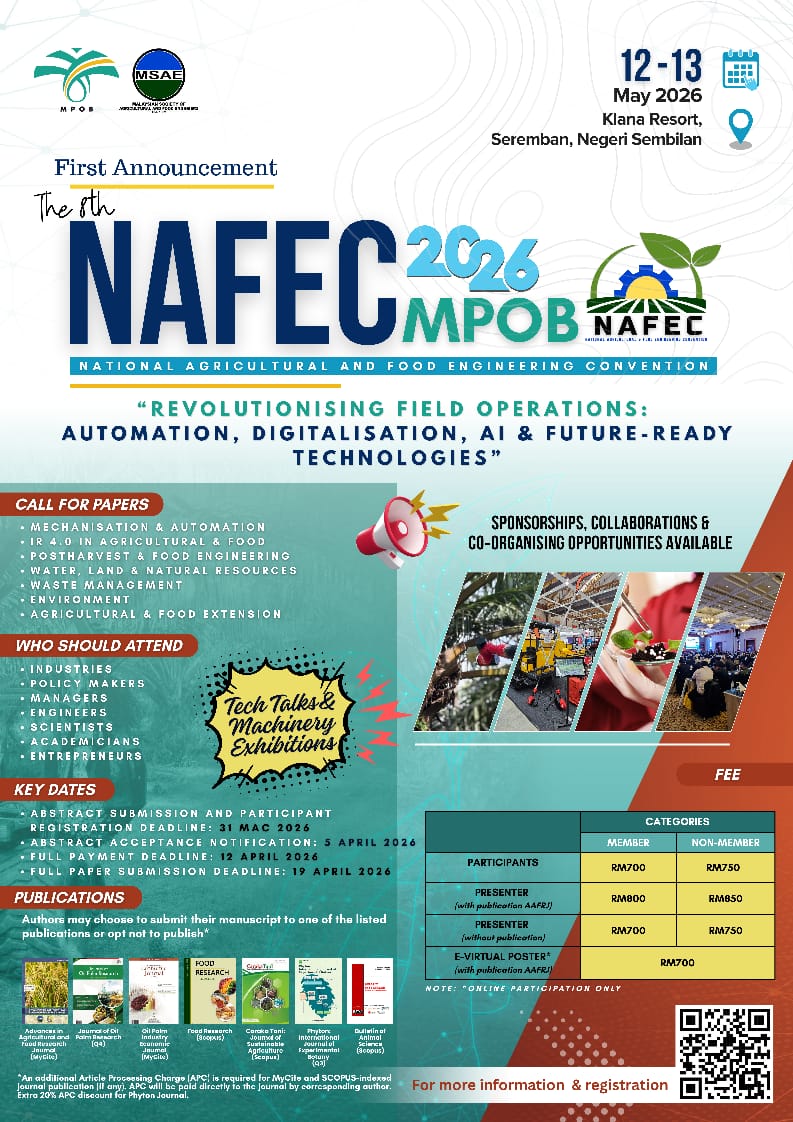Hearing Range Analysis of Rattus Argentiventer the Paddy Field Pest
DOI:
https://doi.org/10.36877/aafrj.a0000314Abstract
Rice is the second most-grown cereal crop and one of the important staple foods in Malaysia. Seasonal rodent attacks from a family of Rattus argentiventer have shortened rice production by up to 80%. Yet, the acoustical method in controlling rodent populations is one of the topics that have not been properly explored. Under the field study radius, this study aims to analyse the hearing range of R. argentiventer under a controlled environment. Knowing a rodent’s ability to hear is essential for evaluating whether human activities, especially in terms of noise pollution, have an impact on hearing and consequently on rodent behaviour. Thirteen subjects were randomly cage-caught in the paddy field and were tested in a reward-based go/no-go procedure. Fully trained subjects were observed after acoustically exposing the subjects to a 10 kHz of pure tone less than 60 dB SPL for 25 sessions. Hearing range analysis commenced by revealing a pure tone to the fully trained subjects at low (1 kHz – 5 kHz), median (10 kHz – 40 kHz) and high (45 kHz – 80 kHz) frequencies. The results showed the subjects have sensitive frequencies at 5 kHz for low frequency, the median frequency at 25 kHz and high frequency at 45 kHz. From the sensitivity hearing results, it can be indicated that the hearing range of R. argentiventer is between 1 kHz to 55 kHz at sound levels of 60 dB. The results responded to the lack of timely response which is within an average of 5 sec and the minimum licking period at an average of 13 sec as the inaudible cut-off hearing range.
Downloads
Published
How to Cite
Issue
Section
License
Copyright (c) 2023 Afifasolehah Abd Rahim, Huah Wei-Xen, Zainal Abidin Arsat

This work is licensed under a Creative Commons Attribution-NonCommercial 4.0 International License.
Author(s) shall retain the copyright of their work and grant the Journal/Publisher right for the first publication with the work simultaneously licensed under:
Creative Commons Attribution-NonCommercial 4.0 International (CC BY-NC 4.0). This license allows for the copying, distribution and transmission of the work, provided the correct attribution of the original creator is stated. Adaptation and remixing are also permitted.

This broad license intends to facilitate free access to, as well as the unrestricted reuse of, original works of all types for non-commercial purposes.
The author(s) permits HH Publisher to publish this article that has not been submitted elsewhere.

.png)

.jpg)



